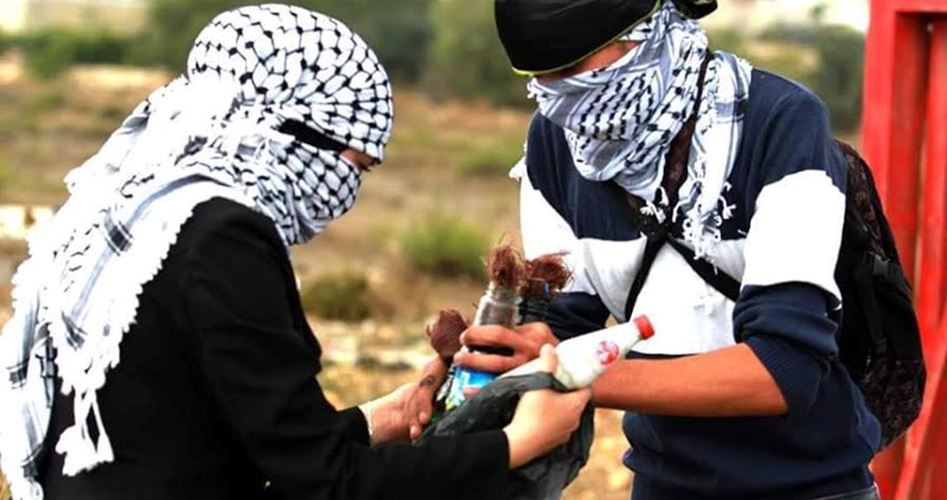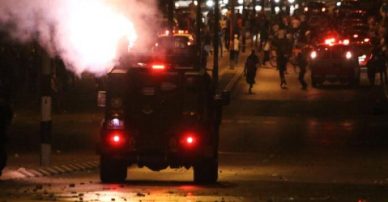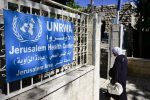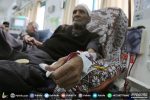The Palestinians marked on Thursday 28/9/2017 the 17th anniversary of the outbreak of the Aqsa Intifada in 2000 which was a turning point in the Palestinian cause and which changed many equations and established a new stage of liberation.
The intifada was triggered by the provocative visit to the Aqsa Mosque by the then-Likud leader Sharon and six Knesset members loyal to him in addition to dozens of settlers and nearly 2000 soldiers. This visit provoked the feelings of Palestinians and Muslims causing the outbreak of the uprising and making the screams of Palestinians at the Aqsa heard in every single corner in Palestine.
The Aqsa Intifada or the Second Intifada was characterized by the frequent armed confrontations and escalating military actions between the Palestinian resistance and the occupation in which 4412 Palestinians were killed 48322 were wounded and more than 1000 Israeli soldiers and settlers were killed and 5000 others were wounded.
Resistance development during the Intifada
The Palestinian resistance has gone through many stages of development during the Aqsa Intifada. It started with a great popularity that swept through the Palestinian cities and towns. The Palestinian people actively participated in it and the clashes between young Palestinians and the occupation soldiers started gradually at the entrances of towns and cities where the scenes of Palestinians throwing stones at the occupation army was screened all over the world. However many Palestinians were killed or injured due to the excessive Israeli use of firearms to quell the peaceful demonstrations and marches.
The military stage then gradually followed starting with armed clashes between the Israeli occupation forces (IOF) and individual resistance fighters. Later on some armed groups were formed by the Palestinian factions and clashes erupted between these groups and the occupation forces.
As the clashes increased and as dozens of Palestinians were killed and injured and as the occupation continued its violations against the Palestinians the Palestinian response began to widen and the circle of engagement reached the occupation soldiers and settlers at the main roadblocks and streets as well as storming Jewish-only settlements and carrying out military operations which led to the spread of fear among the ranks of settlers.
The resistance gradually developed as the Intifada went on. The Palestinian factions were able to form armed groups in most Palestinian cities. Their performance developed and a new phase began in the conflict. This was the stage of the human bombings that constituted the greatest source of fear to the occupation. The scenes of destroyed buses and restaurants the scenes of dead Israelis and the big number of casualties were the most prominent feature at that stage.
The stage of human bombings extended during the Intifada years when another stage began to emerge. It was of the rockets and mortars. The first Qassam home-made rocket was launched from Gaza towards an Israeli settlement was on 26 October 2001. Rockets now are the most disturbing problem for the occupation.
Resistance characteristics
During the Aqsa Intifada the Palestinian resistance was characterized by several features imposed by the facts on the ground perhaps the most prominent of which was the grassroots leadership which led the battle against the occupation. In addition to this was the Palestinian consensus on the resistance approach. The Palestinian factions and their leaders were present and worked on the ground. The Palestinian unity and the consensus on the resistance were the most prominent features among the Palestinians.
The resistance was characterized by its durability over the years of the Intifada and with being self-dependent using whatever means available to invent new resistance tools.
The direct and strong response of the resistance to any Israeli violation and aggression was a prominent feature of the resistance approach and it created a certain level of deterrence to the occupation and its arrogance.
Implications
With the development of human bombings and hitting the depth of the occupation Israel began in 2002 the construction of a separation wall to limit these operations and to check the infiltration of Palestinians to Jerusalem and the occupied territories.
The Intifada was also marked by the assassination of several prominent Palestinian leaders headed by the founder of the Islamic Resistance Movement Hamas Sheikh Ahmed Yassin the leader of the Movement in Gaza Abdel Aziz Rantisi in addition to the Secretary General of the Popular Front for the Liberation of Palestine (PFLP) Abu Ali Mustafa and the leader of the armed wing of the Palestinian National Liberation Movement (Fatah) Raed Al Karmi.
During the intifada the occupation destroyed the Palestinian infrastructure in the West Bank while suffering from heavy losses itself the most striking of which was the tourism sector and the economy of Jewish-only settlements in the West Bank and for years. Other effects were the collapse of the myth of the invincible army and the spread of insecurity and instability in all areas of the occupied Palestinian land.












